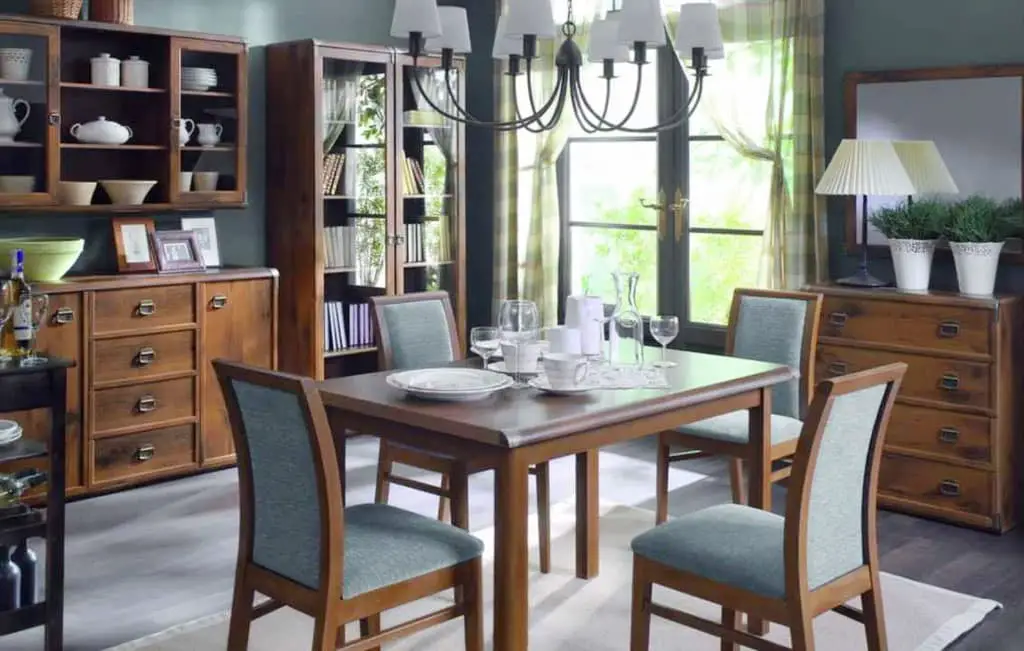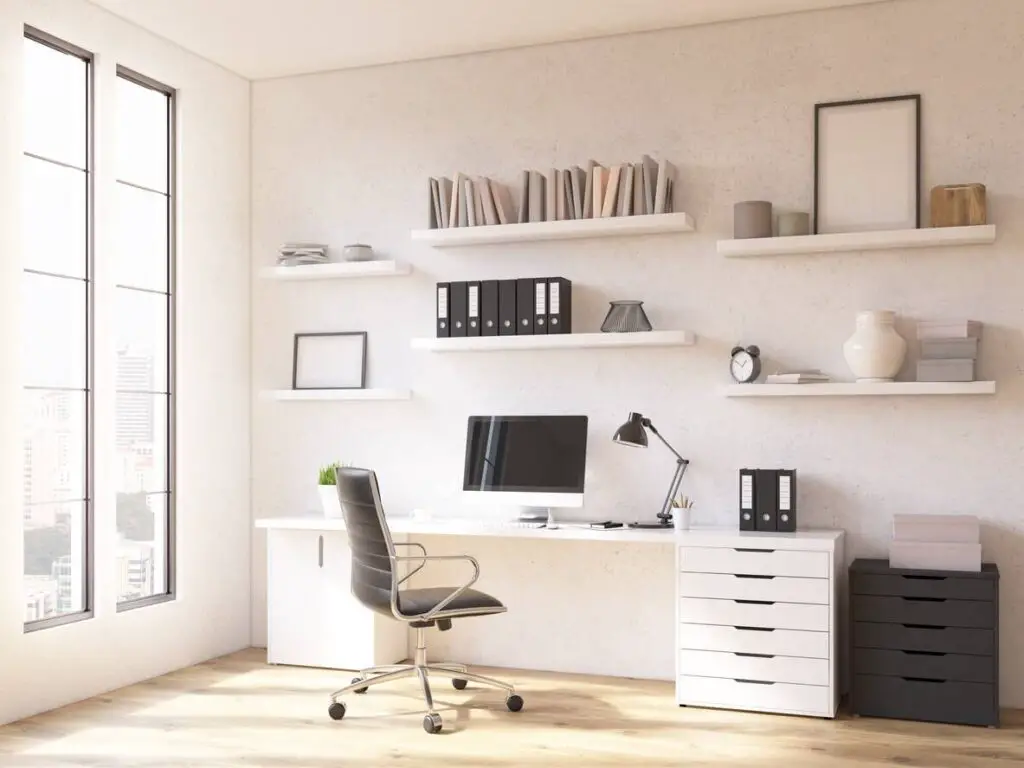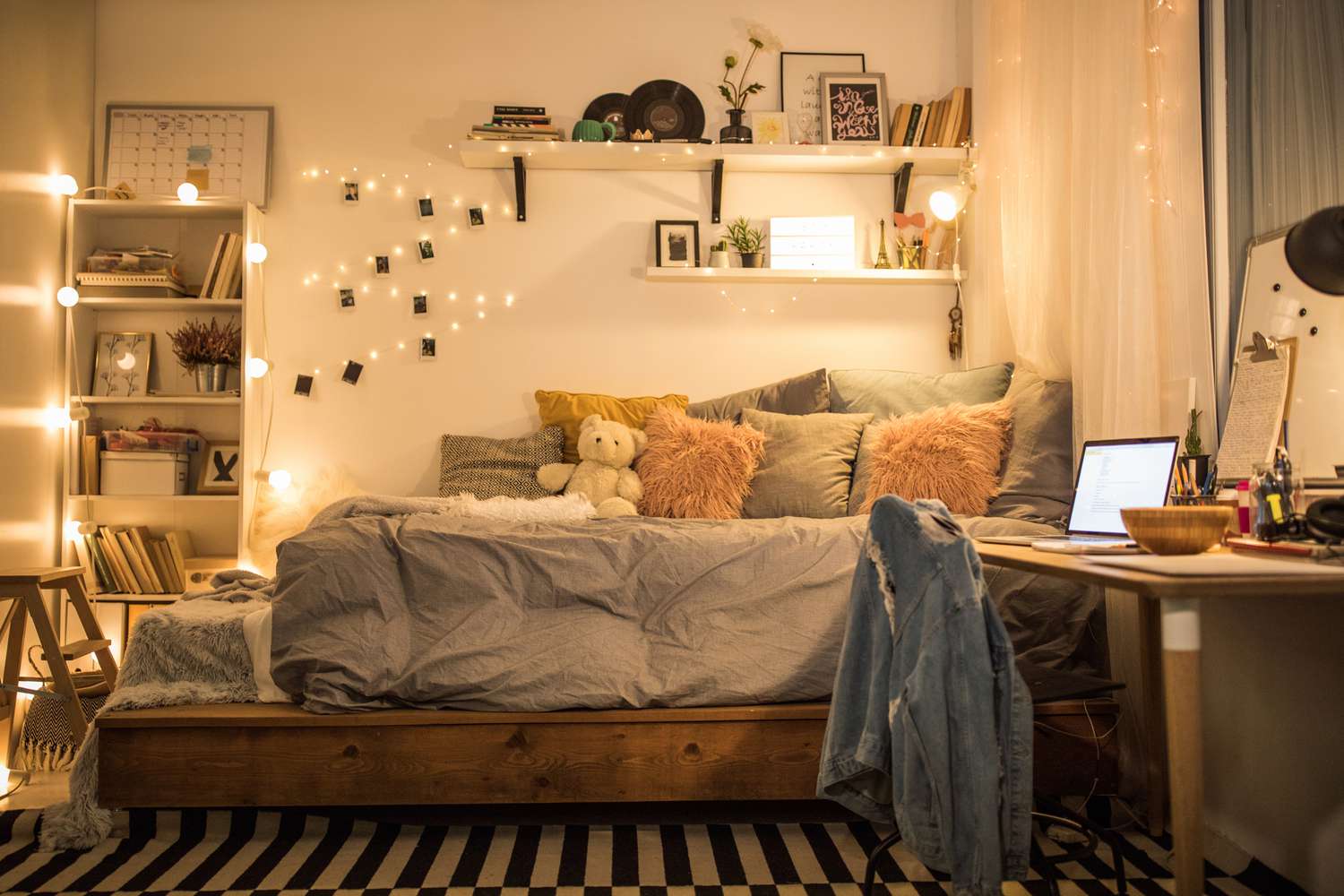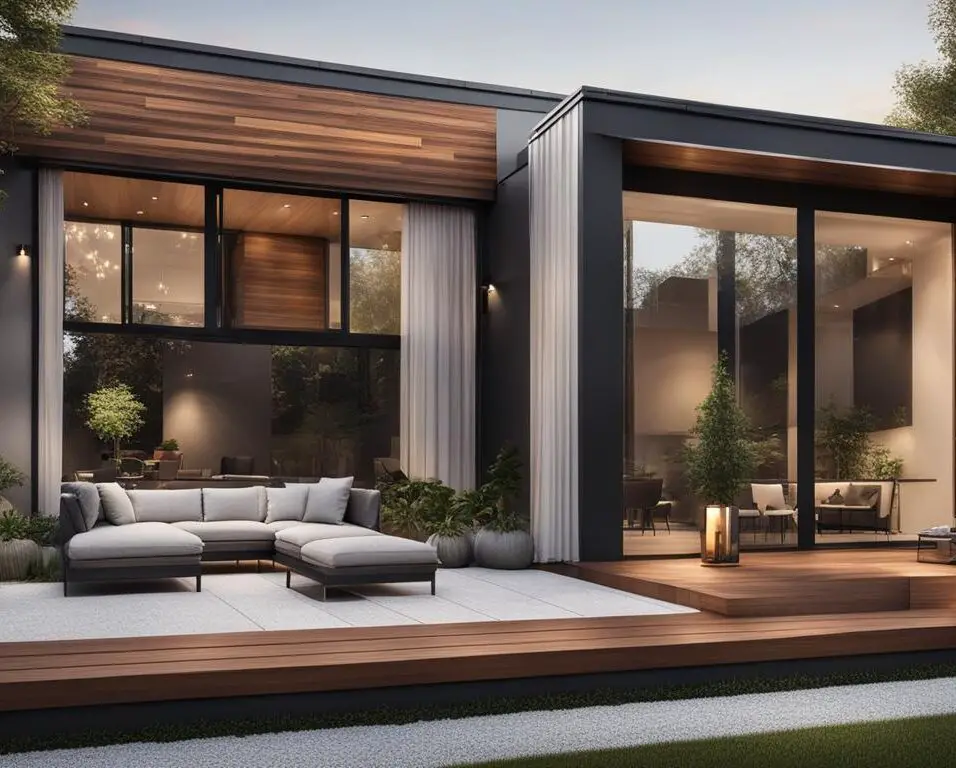How To Rearrange Your Room For More Space
Introduction
How To Rearrange Your Room For More Space: In the ever-evolving landscape of modern living, the concept of space has become a cherished commodity. Whether you reside in a cozy apartment, a sprawling house, or something in between, the art of maximizing your living space holds universal appeal. Welcome to a transformative journey where the boundaries of your room are not set in stone but are waiting to be reimagined and expanded. In this comprehensive guide, we delve into the art and science of rearranging your room to unlock its hidden potential and create an environment that feels both spacious and functional.
Space, or the perception thereof, is a design element that can redefine the way you experience your living quarters. We explore innovative techniques, strategic furniture placement, clever storage solutions, and creative design principles that empower you to transform your room from feeling cramped to open and inviting. Whether your goal is to enhance functionality in a small apartment, make the most of an awkwardly shaped room, or simply breathe new life into your living space, this guide offers a wealth of insights and actionable tips.
We understand that every living room presents its unique challenges and opportunities. With that in mind, we navigate through various room types, offering tailored advice for bedrooms, living rooms, kitchens, and more. From the art of decluttering to the magic of optical illusions and the versatility of multi-functional furniture, you’ll discover a myriad of ways to create more space and a sense of airiness in your room.
So, embark on this transformative journey with us, as we explore the principles, strategies, and creative thinking required to rearrange your room for more space. Unleash your inner interior designer, and let’s transform your living space into a haven of functionality, comfort, and style.

Is it healthy to rearrange your room?
Why Bother Rearranging Your Bedroom? Even if you’re a creature of habit, psychologists note that rearranging furniture can give people a mood boost. The idea here is that considering new bedroom layout ideas opens your mind to new possibilities and engages your creativity.
Yes, rearranging your room can have positive effects on your mental and emotional well-being, making it a healthy practice for several reasons:
Fresh Perspective:
Rearranging your room offers a change of scenery, helping you see your living space from a new perspective. This can be mentally refreshing and stimulate creativity.
Decluttering:
The process often involves decluttering, which can have a significant impact on your mental health. A cleaner, more organized space can reduce stress and anxiety by providing a sense of order and control.
Renewed Energy:
A rearranged room can bring a sense of renewal and energy. It may inspire you to engage in other positive habits, such as tidying up regularly or taking on new projects.
Personalization:
Rearranging allows you to personalize your space to better suit your current needs and preferences. This sense of ownership can enhance your connection to your home.
Improved Functionality:
You can optimize the functionality of your room, making it more conducive to your daily activities. This can lead to increased productivity and overall well-being.
Reduction of Boredom:
Changing your surroundings can alleviate boredom, which is especially beneficial during times of monotony or routine.
Mood Enhancement:
A well-planned rearrangement can create a room layout that promotes relaxation, creativity, or focus, depending on your goals. This can positively impact your mood.
However, it’s important to approach room rearrangement with balance. Frequent, excessive changes may lead to instability and stress. It’s essential to find a rhythm that suits your personality and lifestyle.
When should I rearrange my room?
Rearranging furniture every season, or at least once a year, can be beneficial in many ways. Whether you entertain on a regular basis or your family members are the only people who frequent your living space, there’s no escaping the foot traffic that will inevitably wear down your carpeting or hardwood flooring.
The timing for rearranging your room can vary based on your personal preferences and circumstances. Here are some instances when you might consider rearranging your room:
Change of Seasons:
As seasons change, you can adapt your room to reflect the weather and seasonal aesthetics. For example, you might introduce warmer colors and cozy textiles in the fall and winter, and lighter, breezier elements for spring and summer.
Life Events:
Major life events, such as moving into a new home, starting a new chapter, or going through a personal transformation, can be ideal times to rearrange your room to align with these changes.
Feeling Stagnant:
If you feel stuck or stagnant in your current environment, rearranging your room can provide a fresh start and reignite your creativity and motivation.
Decluttering Needs:
When clutter accumulates and disrupts your space, it’s a good time to rearrange and declutter. Consider organizing and reevaluating your belongings.
Seasonal Cleaning:
Combine room rearrangement with seasonal cleaning and maintenance routines. This ensures that your room stays fresh and functional.
Boredom or Restlessness:
If you’re experiencing boredom or restlessness, changing your room’s layout can bring excitement and a sense of accomplishment.
Mood Improvement:
When you feel the need to improve your mood or mental state, rearranging your room to create a more positive and harmonious atmosphere can be beneficial.
Remember that room rearrangement is a personal choice, and there’s no set schedule. Listen to your instincts and assess your needs, and don’t be afraid to experiment with changes that make your living space more comfortable and inspiring.
Why do I rearrange my room when I’m depressed?
Dr. Nicole Villegas, a resilience coach and doctor of occupational therapy, said the task also offers people the ability to control their environments. “You are in decision-making power” when you’re rearranging your space, they shared, “and practicing this can signal your nervous system to feel safer and more relaxed.”
Rearranging your room during periods of depression can be a coping mechanism or an attempt to improve your mental well-being. Here are some reasons why people may rearrange their rooms when they’re depressed:
Distraction:
Depression can be overwhelming, and rearranging your room provides a temporary distraction from negative thoughts and emotions.
Sense of Control:
Depression often makes individuals feel a lack of control in their lives. Rearranging your room can offer a sense of control over your environment, providing a small but tangible achievement.
Renewal:
Changing your surroundings can create a feeling of renewal and a break from the monotony of depression. It may give you a sense of starting fresh.
Improving Mood:
A room rearrangement can be an attempt to create a more positive and uplifting atmosphere. Changing the layout and decor can improve the room’s energy and potentially elevate your mood.
Creating Comfort:
Depression can make you seek comfort, and rearranging your room can help you design a space that feels cozier and more nurturing.
Increased Functionality:
If depression has led to neglect of your living space, rearranging can improve functionality, making it easier to navigate and complete daily tasks.
However, it’s important to note that while room rearrangement can provide temporary relief and a sense of accomplishment, it may not be a solution for depression on its own. If you’re experiencing depression, it’s crucial to seek professional help from a therapist, counselor, or psychiatrist. Combining therapeutic interventions with positive changes in your living environment can be a more comprehensive approach to improving your mental health.
Does changing your room help with depression?
All the extra time in the home may lead to feelings of boredom, depression, or isolation. However, we cannot succumb to our low mood, energy and feelings. Instead, experts suggest we rearrange our furniture to help us feel better, as doing so provides feelings of accomplishment and contentment.
Changing your room can have a positive impact on your mental well-being, but it is not a substitute for professional treatment for depression. While rearranging your room may provide temporary relief and improve your mood, it’s essential to understand that depression is a complex mental health condition that often requires therapeutic interventions, such as counseling, therapy, or medication, for long-term management.
However, changing your room can complement your efforts to manage depression in several ways:
Positive Environment:
A well-organized and aesthetically pleasing room can create a more positive and uplifting environment, which can contribute to your overall well-being.
Sense of Control:
Rearranging your room gives you a sense of control over your surroundings, which can be empowering when dealing with depression.
Daily Functionality:
An organized and functional room can make it easier to complete daily tasks and maintain a routine, which is important for managing depression.
Decluttering:
Cleaning and decluttering your room can reduce stress and anxiety, contributing to improved mental health.
Renewed Energy:
Changing your room can provide a sense of renewal and motivation to engage in other self-care activities, such as exercise and social interactions.
Creativity and Self-Expression:
The process of rearranging your room allows for creativity and self-expression, which can be therapeutic.
While changing your room can be a valuable part of self-care, it should be considered as one element of a comprehensive approach to managing depression. If you’re experiencing depression, it’s crucial to seek help from mental health professionals who can provide the appropriate treatments and support to address the underlying causes and symptoms of depression.
Which room to decorate first?
Generally this would be the living room, or any other room where you both entertain guests and spend a lot of down time. You can then use less commonly used rooms as storage spaces for the living room furniture.
When deciding which room to decorate first, consider your priorities, budget, and the areas where you spend the most time. The choice ultimately depends on your personal preferences and needs. Here are some factors to help you decide:
Living Room:
The living room is often a focal point of the home, where you entertain guests and spend quality time with family. Decorating it first can create a welcoming atmosphere and set the tone for your home’s overall style.
Bedroom:
Your bedroom is your personal sanctuary. Decorating it first can provide you with a cozy, relaxing retreat. A well-decorated bedroom can also improve your sleep quality and overall well-being.
Kitchen:
If you enjoy cooking and spending time in the kitchen, consider prioritizing this room. A well-designed kitchen can enhance your cooking experience and efficiency.
Home Office:
If you work from home or need a dedicated workspace, decorating your home office can boost productivity and create a conducive environment for work-related tasks.
Children’s Room:
If you have children, their rooms may be a top priority. Decorating these spaces can make them feel comfortable and inspire creativity.
Bathroom:
While often overlooked, a beautifully decorated bathroom can create a spa-like experience. It’s a smaller project that can yield significant results.
Budget:
Consider your budget and the cost of decorating each room. Starting with smaller, budget-friendly projects can help you spread your resources efficiently.
Personal Preferences:
Your personal preferences and immediate needs should guide your decision. Focus on the rooms that matter most to you and your family.
Remember that decorating is a gradual process, and you can tackle one room at a time, allowing you to focus on details and avoid feeling overwhelmed.
Which room to furnish first?
When Buying Furniture, Start with Key Rooms. The living room and main bedroom are two places you likely spend the most time in, so these are good rooms to prioritize. You don’t need to have a fully organized pantry before you have an acceptable place to sleep.
The choice of which room to furnish first depends on your lifestyle, needs, and priorities. Here are some considerations to help you decide which room to furnish initially:
Living Room:
Furnishing the living room first is a common choice because it’s often the central gathering space in a home. It’s where you entertain guests and spend quality family time. Prioritizing the living room can create a comfortable and inviting atmosphere.
Bedroom:
Furnishing your bedroom early on can provide you with a comfortable and relaxing sleep environment. A good quality mattress and essential bedroom furniture are key to a restful night’s sleep.
Dining Room:
If you enjoy hosting meals and gatherings, furnishing the dining room may be a priority. A dining table and chairs can make your home more functional for entertaining.
Kitchen:
Furnishing the kitchen with essential appliances and storage solutions can enhance your cooking and meal preparation experience. It’s especially important if you love to cook.
Home Office:
If you work from home or need a dedicated workspace, furnishing your home office with a comfortable desk, chair, and storage is essential for productivity.
Children’s Room:
If you have children, consider furnishing their rooms early on to create a comfortable and safe space for them.
Bathroom:
Basic bathroom furnishings, such as a vanity, mirror, and storage, are essential for daily use.
Budget:
Take your budget into account when deciding which room to furnish first. Starting with essential pieces and gradually adding more furniture as your budget allows is a practical approach.
Personal Preferences:
Consider your own preferences and immediate needs. Furnish the rooms that are most important to your daily life and well-being.
It’s also worth considering the condition of your existing furniture and whether any rooms require urgent attention. Remember that furnishing your home is a process that can take time, so prioritize based on what will make your living space more comfortable and functional.
How to arrange bedroom furniture according to Vastu?
Position of Furniture
The headboard should always be placed towards the east or the south so that one’s legs point towards the north or west. Position the bed in the centre of the bedroom so that there is adequate circulation space around it. Avoid placing the bed in the corner of the room or directly under a beam.
Vastu Shastra is an ancient Indian science that focuses on the harmonious arrangement of living spaces to promote positive energy flow. Here are some Vastu principles to consider when arranging bedroom furniture:
Bed Placement:
According to Vastu, the head of the bed should be in the south, west, or southwest direction. This promotes restful sleep and overall well-being. Avoid placing the head of the bed in the north or east directions.
Bed Position:
Ensure that the bed is positioned so that you have a clear view of the bedroom door from the bed. This provides a sense of security and control.
Mirror Placement:
Avoid placing mirrors in a way that they directly reflect the bed. This is believed to disrupt sleep and create negative energy.
Under the Bed:
It’s advisable not to store items under the bed, as this can obstruct energy flow. If storage is necessary, use a bed with built-in storage or keep it minimal.
Electrical Appliances:
Keep electrical appliances like TVs, laptops, and mobile phones away from the bed to minimize electromagnetic radiation.
Colors:
Choose calming and soothing colors for the bedroom, such as soft blues, greens, or neutral tones. Avoid bright or stimulating colors.
Clutter-Free Space:
Maintain a clutter-free and organized bedroom. Clutter can disrupt the flow of positive energy.
Natural Light and Ventilation:
Ensure that the bedroom receives adequate natural light and ventilation. Fresh air and natural light are essential for good energy flow.
Art and Decor:
Select artwork and decor that promote relaxation and positive energy. Avoid images depicting violence or negativity.
Balance:
Maintain a sense of balance in the bedroom by having matching pairs of furniture, such as nightstands on either side of the bed.
It’s important to note that while Vastu principles can provide guidelines for arranging bedroom furniture, personal preferences and practical considerations should also be taken into account. You can adapt these principles to create a bedroom layout that aligns with your comfort and aesthetics while respecting the fundamental Vastu concepts.
Can I put a bed in front of a window?
According to Sarah Barnard of Sarah Barnard Designs, “placing a bed in front of the window works well in situations where other locations can create conflicts, like blocking doorways or furnishings or creating an odd or uncomfortable space division.
Yes, you can place a bed in front of a window, but there are some considerations to keep in mind:
Window Size and Placement:
The size and placement of the window play a significant role. If the window is large and positioned high on the wall, it can create an interesting backdrop for the bed. However, if the window is small or positioned too low, it may not be practical to place the bed in front of it.
Window Coverings:
Consider the type of window coverings you have or plan to install. Sheer curtains, blinds, or shades can provide privacy and control over the amount of natural light entering the room.
Aesthetics:
Placing a bed in front of a window can create a unique and visually appealing arrangement. It can frame the bed and make it a focal point in the room.
Ventilation:
Ensure that you can easily open and close the window for ventilation. Proper airflow is essential for a comfortable sleep environment.
Accessibility:
Consider how you will access the window for maintenance or cleaning. Make sure you can reach the window easily when needed.
Bed Size:
The size of your bed matters. If the bed is too large, it may block too much of the window and limit natural light. Opt for a bed size that complements the window’s proportions.
Light Control:
If you’re sensitive to light when sleeping, consider blackout curtains or blinds to block out unwanted light.
Headboard Placement:
If the window is your preferred backdrop, consider using a headboard that complements the window’s height and shape. This can create a harmonious and balanced look.
Aesthetic Balance:
Ensure that the overall aesthetics of the room work with the bed-in-front-of-window arrangement. Balance the room’s decor and layout to create a cohesive design.
Ultimately, the decision to place a bed in front of a window comes down to your personal preferences and the specific characteristics of your bedroom. It can be a creative and stylish choice when done thoughtfully, but it’s essential to consider practicality and comfort as well

Conclusion
Our journey through the art of rearranging your room for more space, we find ourselves standing at the threshold of a transformed living environment. Throughout this guide, we’ve embarked on a voyage of creativity, design ingenuity, and practicality, all aimed at unlocking the hidden potential of your living space.
In the modern world, where the value of space is at a premium, the ability to reimagine and rearrange your room holds immense significance. Whether you dwell in a cozy apartment, a spacious house, or something in between, the techniques and insights shared here empower you to make the most of what you have. The boundaries of your room are no longer static; they are flexible, adaptable, and limited only by your imagination.
From the initial steps of decluttering and purging to the strategic placement of furniture, the use of clever storage solutions, and the mastery of optical illusions, you’ve acquired a toolkit for creating more space and enhancing the functionality of your living area. The principles and strategies explored here can be applied to bedrooms, living rooms, kitchens, and any other room in your home, enabling you to tailor your space to your unique needs and lifestyle. But beyond the practical aspects, rearranging your home decor is an art form that allows you to infuse your personality, style, and creativity into your living space. Your room is not just a physical container; it’s a canvas upon which you can paint your vision and create an environment that reflects your individuality.








